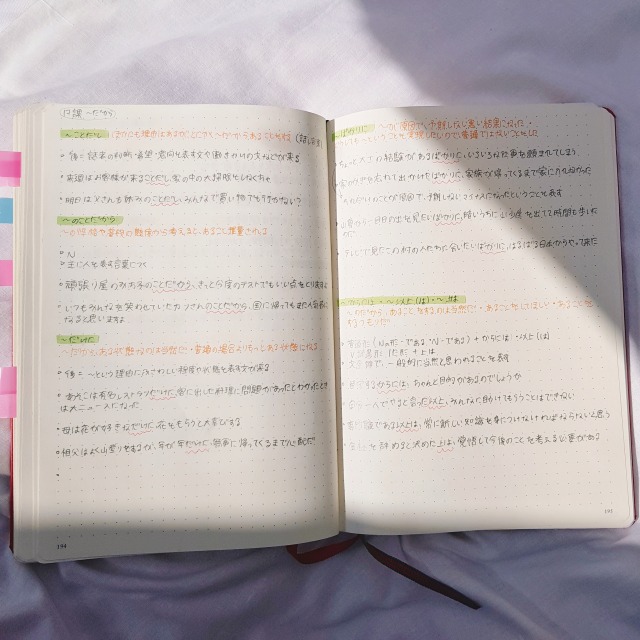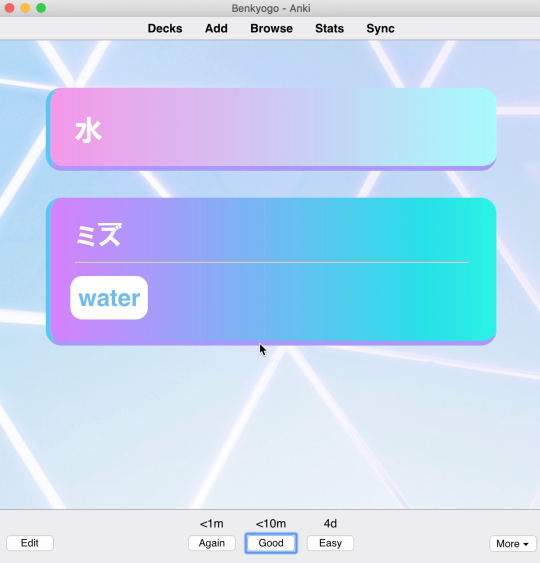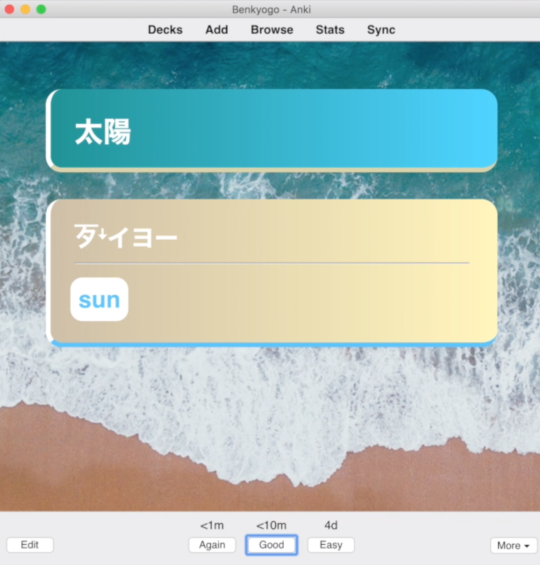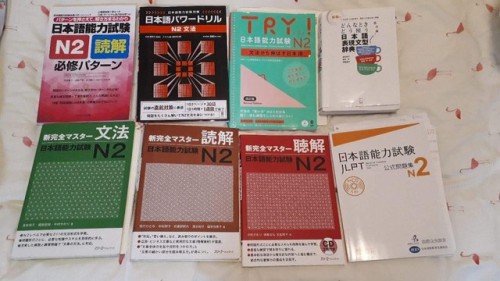#日本語能力試験




New books always gets me excited


アマゾンで注文した漢字ドリル用ノートがやっと届きましたぁ!
Notebooks for kanji have finally arrived. Bought them from amazon : )
There’s a discord chat, if you’re not familiar it’s an app where you can join different chat servers, that will help you improve your Japanese.
Perks:
Native Japanese and Native English speakers (as well as others) who are eager to learn and to help others achieve their language goals.
Easy to set up and use
Different things to do like quiz channels: Include all the JLPT kanji levels, etc
You can use your mic and even video to do language exchange with other learners
If you’re game, join the server!
Use the link below and happy studying!
Update: invitation link edit
Wow, it’s been so long since I’ve dedicated time to studying.
I feel like I’ve only just acclimated to life in Tokyo.
I’ve had a lot of ups and downs and distractions, but I want to get back to studying hard and working towards my goals.
JLPT N4 Grammar - 〜そうだ・〜らしい
Are you using it right??
We discuss the nuances and differences of two very similar grammar points… do you already know which one is used way more than the other?
————-
Welcome to Benkyogo!
In our ぶんぽうご Real Japanese Grammar series, Nani and Mani are deep diving into the textbook grammar required for the JLPT, throwing out the stuff you’ll never use, and teaching you how to speak authentically whilst expressing your own personality.
⭕️ You WILL:
- Understand grammar in real life context- Be told when and where to forget the BS - Get to listen to 2 random people free-talking about Japanese grammar
❌ You WON’T:
- Sound boring when talking to your Japanese friends - Say anything rude to your Japanese boss - Speak like you’re fresh outta your favourite anime
We don’t claim to be experts, we’re just 2 Japanese speakers (one native, one second language) chatting about the DO’s and DON’T’s of Japanese grammar in the 21st century. Keep up, textbooks!!
————-
Check out https://benkyogo.co.uk/ for detailed hints, tips and resources to self-study Japanese.
⛩Check out our store at https://www.etsy.com/shop/benkyogo

Check out the accompanying YouTube video here for detailed instructions.

I’ve been using Anki for over 10 years to study Japanese. It’s one of the best ways to learn and remember vocabulary, especially when everything starts to look the same…
I have created a Copy & Paste CSS code to use with your Anki decks. It is fully customizable, using the this gradient generator. You can find high quality, free stock images here on Pexels. You can see a quick video of the template working on the Anki app here.
DOWNLOAD FREE CUSTOM CSS HERE!

Check out the YouTube video for detailed instructions and more!
Have fun customizing, creating, and most of all - learning!!

Folllow Benkyogo on YouTube!
⛩️Check out the Benkyogo Store!
Welcome to Benkyogo! - - - - - - - - - - - - - - - - - - - - -
Drama’s mentioned in this video:
- Hana Yori Dango (花より男子)
- Kekkon Dekinai Otoko (結婚できない男)
- Densha Otoko (電車男)
- Gokusen (ごくせん)
- GTO
- - - - - - - - - - - - - - - - - - - - - -
⛩ Visit the Benkyogo blog for more ways to learn Japanese!
~が早いか “No sooner than” Used when some action occurs shortly after another. Puts emphasis on the occurrence of two things happening almost at the same time. Cannot have volition, commands, or negatives follow. Formed with V(ル・タ形) + が早いか
- 飼い主が名前を呼ぶが早いか、犬が走り出した
~ や否や(やいなや)“In response to A, B suddenly happens.” One action follows on the heels of another and the second action is an unexpected reaction. Puts emphasis on the feeling of abruptness of the events. Cannot have volition, commands, or negatives follow. Formed with Vル+ や否や/~否や/~や
- その薬を飲むや否や、急に眠気がおそってきた。
In a very quick way to differentiate these two, ~が早いか emphasizes 同時に while ~ や否や cannot attach to the past tense and emphasizes 突然に
Should have posted this earlier, but these books helped me the most with passing N2 in July. Hope this helps if you’re unsure of which language books you want to use
Post link
I’d like to briefly (turns out I lied, it’s fairly detailed) explain how I got to the point where Japanese grammar patterns are just part of life and I don’t really think about them. The most straightforward guides are Kanzen Master and Tae Kim.
That being said most Japanese textbooks will probably cover most of the grammar from N4&5. Everyone seems to like Genki, I’ve never touched it but it’s probably good.
Kanzen Master 新完全マスター
That’s it, really. My Japanese teacher at my language school in Japan literally photocopies pages out of these books.
Make your flashcards as you read the book and do practice questions. Go to Google, type the grammar pattern + grammar and japanesetest4you will come up. Read those sentences, make your own and get them checked by someone (post them somewhere like HelloTalk) and then realise how pointless every grammar pattern past N3 really is when they tell you a more natural way of not using that grammar pattern.
Also, get some Anki decks.
Pay close attention to how things connect.
What verb conjugation has to come before? Can nouns connect? How to change words? Does nominalisation occur? What does 普通形 mean?
The first question in each multiple choice section in Kanzen Master tests your 繋がり so it’s probably important. Sentences often give away what grammar patterns they will use.
For example, if I gave you the question「お前しか____だろう」
- わかる
- わからない
- わかろう
You know it’s gotta be ⑵ because ない always comes after しか。In pretty much every grammar guide these will be written down so get those highlighter engines running!
So that’s basically how you pass N1.
Pay attention to what kind of nuance the grammar has
Some grammar points can only be used when something happens due to the speaker’s intent(意志的行為), some can only be used when things happen of their own accord(自発). Some can’t be used when the speaker and the agent are the same and so on. Kanzen Master has these nuances written down below so again, get those highlighters going!
Make it easy for yourself
Kanzen master is written in Japanese so learning the words that are used to explain other words is a good move. For example, “verb, negative form” would look like 「ない形」or 「否定形」and then instead of “ない but without ない,” you could just say 「未然形」now learning is slightly more convenient and your notes will be cleaner.
There are a lot of grammar patterns that use the same words, 「わけ」「限り」「こと」「もの」「よう」など are the common enemies. Make sure you can easilytell the difference. Take your time and really learn these. As a test, try to explain them to someone else. Try to pick up on the commonly used phrases within each of those widely used words. That helps heaps.
UseSRS! Programs like Anki and WaniKani will do this for you. Now you take way less time to learn a lot more!
書き・硬い言葉 vs 話し言葉
Some grammar patterns are really useful in real life but sound odd if you were to write them in an essay
In witness whereof the parties hereunto have set their hands to these presents as a deed on the day month and year hereinbefore mentioned.
If anyone said this to you, you’d probably think it’s a joke.
The grammar patterns that are onlyused in either context will be marked as 硬い or 話し言葉. Similarly, there are some patterns that you would only use in certain contexts. Political speeches, advertisements, Japanese customer relations. This will be written as a warning but in fine texts at the bottom of each grammar pattern. You know the drill, highlighters! Maybe a different colour this time.
Be aware of what is not used in real life
When you try out your cool new grammar patterns in real life and people don’t react, that’s when you know you’ve got it right. That, or people won’t tell you when you’re wrong. Both are equally likely.
If you’re not sure, ask your friendly resident Japanese person if it’s 言うed. This’ll be edging more into speaking territory but be aware of how Japanese people use (or not use) the grammar that you’ve learned.
People love studying grammar - my thoughts
I get it, there’s formulas and you’re either right or you’re wrong. It’s easy to measure progress cause last week you were on 2課 and now you’re on 4課. And fair enough, the bulk of what you need for JLPT is grammar patterns.
However, if your goal is to pass the JLPT then maybe consider adding another goal but if not, then sure, stick to grammar.
If you wanna do uni in Japan then you’ll need N1
If your goal is to get better at Japanese, then put more time into something like learning 敬語 (respectful language) or making friends with Japanese people. I recommend, for starters, learning the N5 and N4 (I’m not sure but Genki probably covers most of these?) grammar patterns as fast as you can and then allot more of that energy into human connections while studying N3 grammar. Don’t rush into N2 grammar, they’re not used enough to warrant going in head on.
As for N1, being able to recognise the patterns is enough, don’t worry about being able to use them.

